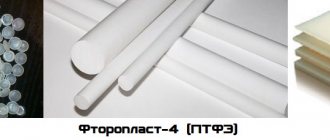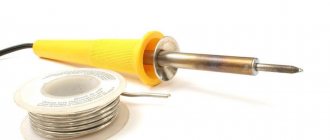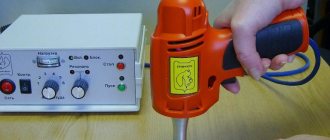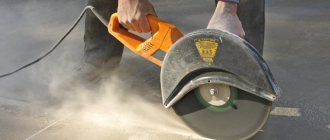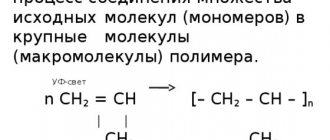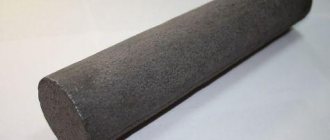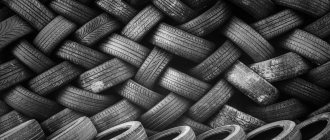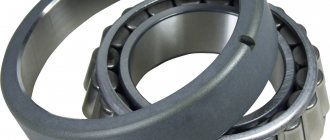In modern cars, the proportion of plastic parts is constantly growing, which means the number of repairs on plastic surfaces is also growing.
In many ways, the coloring of plastics differs from the coloring of metal surfaces, which is primarily due to the very properties of plastics: they are more elastic and have less adhesion to paintwork materials. And since the variety of plastics used in the automotive industry is very wide, if there were not some universal repair materials that ensure the creation of high-quality paintwork on most of their types, we would probably have to plunge headlong into the study of the molecular chemistry of polymers.
Fortunately, you don’t have to do this: in practice, repairing plastics will be much easier. But still, some information about the types of plastics and their properties will be useful to us.
Plastics to the masses
In the 20th century, humanity experienced a synthetic revolution, new materials appeared in its life - plastics. Plastic can easily be considered one of the main discoveries of mankind. Without the invention of this material, many other discoveries would not have been possible or would have been achieved much later.
Alexander Parks. Inventor of plastics
The first plastic was invented in 1855 by British metallurgist and inventor Alexander Parkes. When he decided to find a cheap substitute for the expensive ivory from which billiard balls were made at that time, he could not even imagine what an important discovery he had made.
The ingredients of the first plastic were nitrocellulose, alcohol and camphor. The mixture of these components was heated to a fluid state, and then poured into a mold and hardened at normal temperature. This is how the ancestor of modern plastics, parkesin, was invented.
The development of plastics from natural materials to completely synthetic ones came later - when the German professor at the University of Freiburg, Hermann Staudinger, discovered the macromolecule - the “brick” from which all synthetic organic materials, and natural ones too, are built. This discovery brought Professor Staudinger the Nobel Prize in 1953.
From then on it all began... Almost every year chemical laboratories began to report the discovery of another synthetic material with previously unprecedented properties, and today the world annually produces millions of tons of all kinds of plastics, without which the life of a modern person cannot be imagined.
Plastics are used wherever possible: in ensuring a comfortable life for people, in agriculture, in all areas of industry. The automotive industry was no exception. Here, plastic is being used more and more widely, rapidly displacing metal from the position of its main technological competitor.
Compared to metals, plastics are very young materials. Their history does not even go back 200 years, while iron, tin and lead were familiar to man in ancient times - 3000-4000 BC. e. But despite this, plastic is in many ways superior to metal.
Polystyrene
Polystyrene is an example of the most common thermoplastic polymer. It appears colorless, transparent and hard. Polystyrene is a more durable and rigid material, has a higher operating temperature and is less prone to aging compared to polyethylene. It is considered a good electrical insulator and has high water repellency. Very resistant to alkaline and acidic environments, not susceptible to mold and mildew.
Sheet transparent polystyrene
Structure of expanded polystyrene
Expanded polystyrene
Polystyrene is highly soluble in hydrocarbons and esters. It is very fragile and burns well.
To increase strength, polystyrene is combined with other polymers or rubber. Finished products and blanks made of polystyrene are easy to process. Parts are manufactured by casting a liquid component or by extrusion under pressure.
Laboratory chemical glassware, tubes, threads, films and tapes are made from polystyrene. The material is widely used in electrical engineering in the production of insulators and, first of all, protective sheathing for electrical wires. For industrial further processing, the material is initially produced in sheets and in the form of crumbs, which can later serve as raw materials for final parts and mechanisms.
Polystyrene is popular in the copolymerization process, where two or more polymers are mixed. The resulting materials are given additional beneficial properties of their components. As a rule, these are strength, fire resistance, and cracking resistance. Liquid polystyrene with solvent is used in the production of adhesives and adhesive bases. Widely used in construction in the production of expanded polystyrene. Thermal insulation blocks are produced from this material.
Expanded polystyrene is produced from emulsion polystyrene by pressing.
Expanded polystyrene is used for thermal insulation of refrigeration units, food displays and other commercial equipment. This material looks like frozen foam. It withstands high humidity well, does not rot, and is resistant to the formation of bacteria and fungi. Can be used at temperatures up to + 70C degrees. The main disadvantage of expanded polystyrene is its increased flammability.
It is used as a thermal and sound insulating material in the production of cabins, as well as various household and industrial equipment, in the food industry - for insulating storage chambers, holds of floating craft and food storage rooms at subzero temperatures down to -35C degrees. It is also used in the production of packaging material.
Advantages of plastics
Firstly, plastic is much lighter than metal. This allows you to reduce the overall weight of the car and air resistance when driving, and thereby reduce fuel consumption, and therefore reduce exhaust emissions.
A total reduction in vehicle weight of 100 kg due to the use of plastic parts allows saving up to one liter of fuel per 100 km.
Secondly, the use of plastics provides enormous possibilities for shaping, allowing the production of parts of the most complex and ingenious shapes and the implementation of any design ideas.
The advantages of plastics also include their high corrosion resistance, resistance to weathering, acids, alkalis and other aggressive chemicals, high noise reduction coefficient, excellent electrical and thermal insulation characteristics.
So it's no wonder why plastics have become so widespread in the automotive industry.
Has there been any attempt to create an all-plastic car? But of course! Remember the legendary Trabant, produced in Germany more than 40 years ago. The body of this joke hero was made entirely of laminated plastic.
To obtain this plastic, cotton fabric coming from textile factories was used. 65 layers of this fabric, alternating with layers of ground cresol-formaldehyde resin, were pressed into a very strong material 4 mm thick at a pressure of 40 atm. and temperature 160 °C for 10 minutes.
Trabant. The world's most popular plastic car
All-plastic bodies for production cars are still being developed; many sports car bodies are made entirely of plastic. Traditionally, metal parts (hoods, fenders) on many cars are now also being replaced with plastic ones, for example, in Citroën, Renault, Peugeot and others.
Only if the body parts of the folk Trabant evoked rather an ironic grin, the plastic elements of modern cars, which have the highest strength, corrosion resistance and low specific gravity, force us to treat this material with respect.
Concluding the conversation about the advantages of plastics, we cannot ignore the fact that most of them lend themselves well to coloring, albeit with some reservations. If plastic did not have such an opportunity, it is unlikely that this material would have gained such high popularity.
Why paint plastic?
The need to paint plastics is dictated, on the one hand, by aesthetic considerations, and on the other, by the need to protect the plastics. After all, nothing is eternal. Although plastic does not rot, during operation and atmospheric influences it is still subject to aging and destruction. And the applied paint layer protects the surface of the plastic from various aggressive influences and extends its service life.
At the factory, painting plastic parts does not cause any difficulties. The technologies here are well-established, and in this case we are talking about painting new identical parts from the same plastic. But in a workshop, painters are already faced with the problem of heterogeneity in the materials of various parts.
This is where you have to answer the question: “What is plastic anyway? What is it made from, what are its properties and main types?
What is plastic?
In accordance with the domestic state standard:
Plastics are materials whose main constituents are high-molecular organic compounds that are formed as a result of the synthesis or transformation of natural products. When processed under certain conditions, they tend to exhibit plasticity and the ability to be molded or deformed.
If you remove the first word “plastics” from such a complex definition, you might not even guess what we’re talking about. Well, let's try to figure it out a little.
“Plass was named so because these materials are capable of softening when heated, becoming plastic, and then under pressure they can be given a certain shape, which is retained upon further cooling and hardening.
The basis of any plastic is a polymer (the same “high molecular weight organic compound” from the definition above).
The word polymer comes from the Greek words poly (many) and meros (parts or units). This is a substance whose molecules consist of a large number of identical units connected to each other. These units are called monomers (“mono” - one).
This is, for example, what a monomer of polypropylene, the type of plastic most used in the automotive industry, looks like:
The molecular chains of a polymer consist of an almost countless number of such pieces connected into one whole.
Chains of polypropylene molecules
Based on their origin, all polymers are divided into synthetic and natural . Natural polymers form the basis of all animal and plant organisms. These include polysaccharides (cellulose, starch), proteins, nucleic acids, natural rubber and other substances.
Although modified natural polymers have industrial applications, most plastics are synthetic.
Synthetic polymers are obtained through a chemical synthesis process from the corresponding monomers.
The feedstock is usually oil, natural gas or coal. As a result of the chemical reaction of polymerization (or polycondensation), many “small” monomers of the original substance are connected together, like beads on a string, into “huge” polymer molecules, which are then molded, cast, pressed or spun into the finished product.
So, for example, polypropylene plastic is obtained from the flammable gas propylene, from which bumpers are made:
Now you probably guessed where the names of plastics come from. The prefix “poly-” (“many”) is added to the name of the monomer: ethylene → polyethylene , propylene → polypropylene , vinyl chloride → polyvinyl chloride , etc.
International abbreviations for plastics are abbreviations of their chemical names. For example, polyvinyl chloride is designated as PVC (Polyvinyl chloride), polyethylene - PE (Polyethylene), polypropylene - PP (Polypropylene).
In addition to the polymer (also called a binder), plastics may contain various fillers, plasticizers, stabilizers, dyes and other substances that provide the plastic with certain properties, such as fluidity, ductility, density, strength, durability, etc.
Fiber reinforced materials[edit]
When mixed with fibers, thermoset resins form fiber-reinforced polymer composites, which are used in the production of prefabricated OEM structural composite materials or aftermarket parts [13], and as field-applied, cured and finished composite repairs [14] [15]. ] and protective materials. When used as a binder for aggregates and other solid fillers, they form particle-reinforced polymer composites that are used for factory coating or component fabrication, and for on-site application and curing for construction or maintenance purposes.
Types of plastics
Plastics are classified according to different criteria: chemical composition, fat content, hardness. But the main criterion that explains the nature of the polymer is the behavior of the plastic when heated. On this basis, all plastics are divided into three main groups:
- thermoplastics;
- thermosets;
- elastomers.
Belonging to one or another group is determined by the shape, size and location of macromolecules, along with the chemical composition.
Thermoplastics (thermoplastic polymers, plastomers)
Thermoplastics are plastics that melt when heated and return to their original state when cooled.
These plastics are composed of linear or slightly branched molecular chains. At low temperatures, the molecules are located tightly next to each other and hardly move, so under these conditions the plastic is hard and brittle. With a slight increase in temperature, the molecules begin to move, the bond between them weakens and the plastic becomes plastic. If you heat the plastic even more, the intermolecular bonds become even weaker and the molecules begin to slide relative to each other - the material passes into an elastic, viscous state. When the temperature drops and cools, the whole process goes in reverse.
If overheating is avoided, at which point the chains of molecules break apart and the material decomposes, the process of heating and cooling can be repeated as many times as desired.
This feature of thermoplastics to repeatedly soften allows these plastics to be repeatedly processed into certain products. That is, theoretically, one wing can be made from several thousand yogurt cups. From an environmental point of view, this is very important, since subsequent recycling or disposal is a big problem for polymers. Once in the soil, plastic products decompose within 100–400 years!
In addition, due to these properties, thermoplastics lend themselves well to welding and soldering. Cracks, kinks and deformations can be easily eliminated by heating.
Most polymers used in the automotive industry are thermoplastics. They are used for the production of various parts of the interior and exterior of a car: panels, frames, bumpers, radiator grilles, lamp housings and exterior mirrors, wheel covers, etc.
Thermoplastics include polypropylene (PP), polyvinyl chloride (PVC), acrylonitrile-butadiene-styrene copolymers (ABS), polystyrene (PS), polyvinyl acetate (PVA), polyethylene (PE), polymethyl methacrylate (plexiglass) (PMMA), polyamide (PA) , polycarbonate (PC), polyoxymethylene (POM) and others.
Thermosetting plastics (thermoset plastics, duroplasts)
If for thermoplastics the process of softening and hardening can be repeated many times, then thermosets after a single heating (when molding the product) pass into an insoluble solid state, and upon repeated heating they no longer soften. Irreversible hardening occurs.
In the initial state, thermosets have a linear structure of macromolecules, but when heated during the production of a molded product, the macromolecules are “cross-linked”, creating a mesh spatial structure. It is thanks to this structure of closely linked, “cross-linked” molecules that the material turns out to be hard and inelastic, and loses the ability to re-transition into a viscous-flow state.
Because of this feature, thermoset plastics cannot be recycled. Also, they cannot be welded and molded in a heated state - when overheated, the molecular chains disintegrate and the material is destroyed.
These materials are quite heat-resistant, so they are used, for example, for the production of crankcase parts in the engine compartment. Large-sized external body parts (hoods, fenders, trunk lids) are produced from thermosets reinforced (for example, glass fiber).
The group of thermosets includes materials based on phenol-formaldehyde (PF), urea-formaldehyde (UF), epoxy (EP) and polyester resins.
Elastomers
Elastomers are plastics with highly elastic properties. When subjected to force, they exhibit flexibility, and after the stress is removed, they return to their original shape. Elastomers differ from other elastic plastics in their ability to maintain their elasticity over a wide temperature range. For example, silicone rubber remains elastic in the temperature range from -60 to +250 °C.
Elastomers, like thermosets, consist of spatially networked macromolecules. Only, unlike thermosets, the macromolecules of elastomers are located more widely. It is this placement that determines their elastic properties.
Due to their network structure, elastomers are infusible and insoluble, like thermosets, but they swell (thermosets do not swell).
The group of elastomers includes various rubbers, polyurethane and silicones. In the automotive industry, they are used primarily for the manufacture of tires, seals, spoilers, etc.
All three types of plastics are used in the automotive industry. Mixtures of all three types of polymers are also produced - so-called “blends”, the properties of which depend on the ratio of the mixture and the type of components.
I. Classification of the Navy
1. Organic and inorganic
Organic BMCs are the basis of living nature that are part of plants - polysaccharides, proteins, pectin substances, starch. Peat, brown coal, and hard coals are products of geological transformation of plant tissues, mainly cellulose and lignin should also be classified as high-molecular compounds. The living world is also based on BMCs - proteins that are the main component of almost all substances of animal origin. Inorganic high-molecular compounds play an important role in the mineral world. The main part of the earth's crust consists of oxides of silicon, aluminum and other multivalent elements, apparently combined into macromolecules. The most common among these oxides is silicon anhydride [SiO2]n, which is a high-molecular compound. More than 50% of the entire mass of the globe consists of silicon anhydride, and in the outer part of the earth’s crust its content reaches 60%. The most common modification of silicon anhydride is quartz - the most important component of most rocks and sand.
2. By origin
High molecular weight compounds are divided into natural or biopolymers (proteins, nucleic acids, polysaccharides), artificial and synthetic (polyethylene, polystyrene, phenol-formaldehyde resins).
3. Depending on the location of atoms and atomic groups in the macromolecule (by structure), they are distinguished:
Macromolecules of high molecular weight compounds have a linear or branched structure; when they are connected by cross-links, three-dimensional spatial polymers arise.
1) linear high-molecular compounds, the macromolecules of which are an open, linear chain (natural rubber) or an elongated sequence of cycles (cellulose);
2) branched high-molecular compounds, the macromolecules of which have the form of a linear chain with branches (amylopectin);
3) spatial or network high-molecular compounds - three-dimensional networks formed by segments of high-molecular compounds of a chain structure (plastics, tanned collagen, vulcanized rubber).
| Structure | Linear | Branched | Spatial |
| Examples | natural rubber, cellulose, low-density polyethylene, nylon | starch, polypropylene, high-density polyethylene | phenol-formaldehyde polymers, wool, rubber |
| Properties | They have flexibility. The longer the polymer chain, the greater the flexibility. As a result of flexibility, polymer macromolecules constantly change their shape. Linear polymers have the highest density; their macromolecules are capable of orientation along the axis of a directed mechanical field (this is used, for example, in the formation of fibers and films). Linear polymers are thermoplastic, soluble | The flexibility of branched macromolecules depends on the degree of branching. The more branching, the less flexibility. Branched polymers are thermoplastic, soluble | Polymers have a network (spatial) structure, do not melt, do not dissolve, but only swell in solvents; Determining the molecular weight for such polymers loses its meaning (there are no individual macromolecules, all chains are stitched into a single network). Network structures can be obtained from thermosetting polymers. |
The flexibility of macromolecules is their ability to reversibly (without breaking chemical bonds) change their shape. The degree of flexibility of polymer macromolecules determines their scope of application.
4. By structure
The chemical structure of macromolecules is the order in which the structural units are connected in a chain.
Structural links of an asymmetrical structure, for example,
can be connected to each other in two ways:
Polymers whose macromolecules are built in one of these ways are called regular .
Polymers of irregular structure are formed by an arbitrary combination of both methods of connecting units.
A polymer is called stereoregular if the R substituents in the main chain of macromolecules are arranged in an orderly manner:
- or they are all on one side of the chain plane (such polymers are called isotactic )
- or strictly alternately on one side and the other of this plane ( syndiotactic polymers )
Stereoregular polymers are capable of crystallization, they have greater strength and heat resistance.
- If the side substituents in macromolecules are located in disorder relative to the plane of the main chain, then such a polymer is stereoirregular or atactic .
Atactic polymers are not capable of crystallization and are inferior in most operational properties to stereoregular polymers of the same chemical composition.
5. In relation to heating
Thermoplasticity is the property of bodies to change shape when heated and retain it after cooling.
Thermoplastics are plastics that, once molded into a product, remain recyclable. The most common thermoplastics are based on polyethylene, polyvinyl chloride, and polystyrene.
are thermosetting plastics, plastics, the processing of which into products is accompanied by an irreversible chemical reaction leading to the formation of infusible and insoluble material (hardening occurs). The most common thermosets are based on phenol-formaldehyde, polyester, epoxy and urea resins. They usually contain large amounts of filler - fiberglass, soot, chalk, etc.
6. By methods of education
Polymers are divided into those obtained as a result of a polymerization reaction or a polycondensation reaction.
1). Polymerization is the reaction of the formation of high-molecular compounds by sequential addition of monomer molecules to a growing chain.
For example, the polymerization of ethylene is written as follows:
n CH2=CH2 → (–CH2–CH2–)n
or CH2=CH2 + CH2=CH2 + CH2=CH2 + … → -CH2–CH2- + -CH2–CH2- + -CH2–CH2- + … → (–CH2–CH2–)n
The process of formation of high molecular weight compounds by the joint polymerization of two or more different monomers is called copolymerization .
Example. Scheme for copolymerization of ethylene with propylene:
2). Polycondensation is the process of formation of high-molecular-weight compounds, proceeding through the substitution mechanism and accompanied by the release of low-molecular-weight by-products.
Video experiment: “Plastic production using the example of resorcinol-formaldehyde resin”
Video experience: “Producing polystyrene foam”
For example, obtaining nylon from ε-aminocaproic acid:
nH2N-(CH2)5-COOH → H-[-NH-(CH2)5-CO-]n-OH + (n-1) H2O
or lavsan from terephthalic acid and ethylene glycol:
nHOOC-C6H4-COOH + n HO-CH2CH2-OH → HO-(-CO-C6H4-CO-O-CH2CH2-O-)nH + (n-1) H2O
Polycondensation is the main method for the formation of natural polymers under natural conditions.
Plastics are materials based on synthetic or natural high-molecular organic substances - polymers.
II. Polyethylene
Depending on the polymerization conditions, three types of polyethylene are distinguished:
- High pressure polyethylene (HD) or low density polyethylene (LD), obtained at a pressure of 1000-3000 atm and a temperature of about 180°C; oxygen serves as the initiator (radical polymerization). The macromolecules of polyethylene obtained by this method have a branched structure, which explains its low density (less dense packing of macromolecules).
- Medium pressure polyethylene (MD polyethylene) is produced in a diluent environment at 35-40 atm and 125-150°C on metal oxide catalysts.
- Low-density polyethylene (LD) or high-density polyethylene (HD). Polymerization is carried out in an organic solvent at a pressure of about 5 atm and a temperature below 80°C. The catalysts are organometallic complexes (Ziegler-Natta catalysts). The process follows an ionic mechanism.
Despite the fact that different types of polyethylene are obtained from the same monomer, they are completely different materials, differing from each other no less than from other polymers. This is explained by different geometric shapes of macromolecules and different crystallization abilities.
High pressure polyethylene consists of branched macromolecules and is a soft and elastic material. Medium and low pressure polyethylenes, which have a linear structure and a fairly high degree of crystallinity (85-90%), are rigid products. All polyethylenes have high frost resistance (low brittleness temperature) and can be used at temperatures down to -70°C; some brands retain their valuable properties at temperatures below -120°C. Polyethylenes, being saturated hydrocarbons, are resistant to many aggressive media (acids, alkalis, etc.) and organic liquids.
In industry, polyethylene of various grades is produced in the form of blocks, sheets and granules. They are processed into products mainly by injection molding, extrusion (squeezing softened polymer through the nozzle of a syringe machine) and blowing. Polyethylene is used to produce seamless corrosion-resistant tubes, insulating sheaths for electrical wires and films, which are widely used as packaging material, for the manufacture of coatings, partitions, in agriculture, etc. Using injection molding or blow molding, various containers (bottles, buckets, etc.) are obtained. Due to its excellent dielectric properties, polyethylene is used for insulating electrical cables in television, radar and multi-wire telephone communications.
Polyethylene welds well. By passing a stream of compressed air with polymer particles suspended in it through an air-acetylene flame and directing this stream at metal products, you can cover them with a continuous protective layer (gas flame spraying method).
A significant disadvantage of polyethylene is its rapid aging, which, however, can be sharply slowed down by introducing antioxidants (phenols, amines, carbon black) into the polymer.
III. Polypropylene
Polymerization of propylene is carried out under conditions similar to those used in the production of low-density polyethylene. This produces stereoregular (isotactic) polypropylene. This polymer crystallizes easily and has a high melting point (175° C). Crystalline polypropylene is the lightest of all known rigid polymers (relative density 0.9); It has high tensile strength and hardness. Thanks to its crystalline structure, stereoregular polypropylene retains its shape and good mechanical properties up to its melting point and can therefore be subjected to routine sterilization. Polypropylene is superior to polyethylene in strength, but inferior to it in frost resistance (brittleness temperature from -5 to -15 ° C). However, this disadvantage is eliminated by introducing ethylene units into the macromolecule of isotactic polypropylene (for example, when copolymerizing propylene with ethylene).
Stereoregular polypropylene has the same dielectric properties as polyethylene, but is more chemically stable at elevated temperatures. Using the same methods used in polyethylene processing, polypropylene is used to make pipes for hot liquids, transparent films with low permeability to liquids and gases, bottles and various vessels for the chemical industry.
Polypropylene is an environmentally friendly material. For such valuable properties, he received the title of “king of plastics.”
By copolymerizing propylene with ethylene, non-crystallizing copolymers are obtained, which exhibit the properties of rubber, characterized by increased chemical resistance and aging resistance.
IV. Polytetrafluoroethylene (Teflon)
Polymerization of tetrafluoroethylene is usually carried out by the water-emulsion method at 70-80 ° C and a pressure of 40-100 atm in the presence of initiators.
Due to the symmetrical linear structure of polytetrafluoroethylene
…-CF2-CF2-CF2-CF2-CF2-CF2-…, or (-CF2-CF2-)n, or (-CF2-)2n
has a crystalline structure and a high melting point (320-327°C). The total dipole moment of the polymer is 0, so Teflon is an excellent dielectric. The operating temperature range is very wide: from -190° C to +300° C. At the same time, the polymer is characterized by high chemical resistance.
To process Teflon into products, a method is used to cold press powdered polymer into cylindrical blanks, which are then machined on lathes.
Teflon is used in chemical engineering for the manufacture of plates, taps, taps, valves, etc., used at high temperatures in concentrated mineral acids. High wear resistance and low coefficient of friction have made Teflon an indispensable material for the production of bearings operating in aggressive environments or in contact with liquefied gases (oxygen, hydrogen, etc.) and do not require lubrication.
CORs
Educational film: “Thermosetting plastics”
Video experiment: “Plastic production using the example of resorcinol-formaldehyde resin”
Video experience: “Producing polystyrene foam”
Educational film: “Polyethylene”
Educational film: “Polypropylene”
Determining the type of plastic. Marking
Any repair to a plastic part must begin with determining the type of plastic the part is made from. If in the past this was not always easy, now it is easy to “identify” plastic - all parts, as a rule, are marked.
Manufacturers usually stamp the plastic type designation on the inside of the part, be it a bumper or a mobile phone cover. The type of plastic is usually enclosed in brackets and may look like this: >PP/EPDM<, >PUR<, .
Assignment : Take off the cover of your mobile phone and look at what type of plastic it is made of. Most often this is >PC<.
There can be a lot of options for such abbreviations. Let's look at several of the most common types of plastics in the automotive industry.
Examples of the most common types of plastic in the automotive industry
Polypropylene - PP, modified polypropylene - PP/EPDM
Polypropylene is the most common type of plastic in the automotive industry. In most cases, during repairs we will deal with its various modifications.
Polypropylene has many advantages: low density (0.90 g/cm³ - the lowest value among all plastics), high mechanical strength, chemical resistance (resistant to dilute acids and most alkalis, detergents, oils, solvents), heat resistance (begins to soften when 140°C, melting point 175°C). It is almost not subject to corrosion cracking and has good recovery ability. In addition, polypropylene is an environmentally friendly material.
Such valuable properties of this plastic give reason to consider it an ideal material for the automotive industry. Thanks to the advantages of polypropylene, it even began to be called the “king of plastics.”
Almost all bumpers are made from polypropylene; this material is also used in the manufacture of spoilers, interior parts, instrument panels, expansion tanks, radiator grilles, air ducts, battery housings and covers, etc.
Only when casting most of these parts, not pure polypropylene is used, but its various modifications.
“Pure” unmodified polypropylene is very sensitive to oxygen and ultraviolet radiation; during operation it quickly loses its properties and becomes brittle. For the same reason, a finishing coating applied to pure polypropylene cannot have strong and durable adhesion.
Additives introduced into polypropylene - often in the form of rubber and talc - significantly improve its properties and make it possible to paint it.
Only modified polypropylene can be painted. On “pure” polypropylene, adhesion will be very weak! Pure polypropylene >PP< is used, for example, to make washer fluid reservoirs, expansion tanks, disposable tableware, cups, etc.
All modifications of polypropylene are designated by the first two letters as >PP...<, no matter how long the abbreviation is. The most common product of these modifications is >PP/EPDM< (copolymer of polypropylene and ethylene propylene rubber).
ABS (acrylonitrile butadiene styrene copolymer)
ABS is an elastic, but at the same time impact-resistant plastic. The rubber component (butadiene) is responsible for elasticity, and acrylonitrile is responsible for strength. This plastic is sensitive to ultraviolet radiation - under its influence the plastic quickly ages. Therefore, ABS products cannot be exposed to light for a long time and must be painted.
Most commonly used for the production of lamp housings and exterior mirrors, radiator grilles, dashboard trims, door trims, wheel covers, rear spoilers, etc.
Polycarbonate - PC
One of the most impact-resistant thermoplastics. To understand how durable polycarbonate is, it is enough to know that this material is used in the manufacture of bulletproof bank counters.
In addition to strength, polycarbonates are distinguished by their lightness, resistance to light aging and temperature changes, and fire safety (it is a difficult-to-ignite, self-extinguishing material).
Unfortunately, polycarbonates are sensitive to solvents and tend to crack under internal stress.
Unsuitable aggressive solvents can greatly impair the strength of this plastic, so when painting parts where strength is of key importance (for example, a polycarbonate motorcycle helmet), you need to be very careful and strictly follow the manufacturer’s recommendations, and in some cases even refuse painting altogether. But spoilers, radiator grilles and bumper panels made of polycarbonate can be painted without problems.
Polyamides - PA
Polyamides are rigid, durable and at the same time elastic materials. Polyamide parts can withstand loads close to the loads permissible for non-ferrous metals and alloys. Polyamide is highly resistant to wear and chemical resistance. It is almost impervious to most organic solvents.
Most often, polyamides are used for the manufacture of removable car caps, various bushings and liners, pipe clamps, door lock tongues and latches.
Polyurethane - PU, PUR
Until polypropylene became widespread in production, the most popular material for the manufacture of various elastic car parts was polyurethane. Steering wheels, mudguards, pedal covers, soft door handles, spoilers, etc. were made from it.
For many, this type of plastic evokes associations with the Mercedes brand. Until recently, almost all models had bumpers, side door trims, and sills made of polyurethane.
To produce parts from this plastic, equipment that is not as complex as for polypropylene is required. Therefore, today many private companies prefer to work with polyurethane in the manufacture of various parts for car tuning.
Fiberglass - SMC, BMC, UP-GF
Fiberglass is one of the main representatives of the family of so-called “reinforced plastics”. These materials are made on the basis of epoxy or polyester resins (these are thermosets) with fiberglass as a filler.
Due to their high physical and mechanical characteristics, as well as resistance to various aggressive influences, fiberglass plastics are widely used in many areas of industry. This material is used, for example, in the production of bodies for American minivans.
In the process of producing fiberglass parts, “sandwich” technologies can be used, when the parts consist of several layers of various materials, each of which meets certain requirements (strength, chemical resistance, abrasion resistance).
Properties [edit]
Thermoset plastics are generally stronger than thermoplastic materials due to the three-dimensional network of bonds (cross-linking), and are also better suited for high temperature applications up to decomposition temperature since they retain their shape as strong covalent bonds between polymer chains cannot be easily breaks. The higher the crosslink density and aromatic content of a thermoset polymer, the higher the resistance to thermal degradation and chemical attack. Mechanical strength and hardness also improve with increasing crosslink density, although at the expense of brittleness. [9] They usually decompose before melting.
A rigid plastic thermoset material may undergo permanent or plastic deformation under load. Elastomers that are soft and resilient or elastic and can deform and return to their original shape when the load is removed.
Conventional thermoset plastics or elastomers cannot be melted and reshaped once cured. This generally prevents it from being recycled for the same purpose other than as filler. [10] New developments include thermoset epoxy resins, which, when heated in a controlled manner, contain cross-linked networks that allow repeated shape changes, like quartz glass, through reversible covalent bond exchange reactions when reheated above the glass transition temperature. [11] There are also thermoset polyurethanes that have transient properties and thus can be recycled or recycled. [12]
If the type of plastic is unknown
Here we got our hands on a plastic part that didn’t have any markings on it. But we desperately need to find out what kind of material this is, or at least its type - is it thermoplastic or thermoset.
Because, if we are talking, for example, about welding, then it is only possible with thermoplastics (adhesive compositions are used to repair thermosetting plastics). In addition, only materials of the same name can be welded; dissimilar ones simply will not interact. In this regard, it becomes necessary to “identify” an unknown plastic in order to correctly select the same welding additive.
Identifying the type of plastic is not an easy task. Plastics are analyzed in laboratories according to various indicators: combustion spectrogram, reaction to various reagents, smell, melting point, etc.
However, there are several simple tests that allow you to determine the approximate chemical composition of plastic and classify it as one or another type of polymer. One of these is analyzing the behavior of a plastic sample in an open fire source.
For the test, we will need a ventilated room and a lighter (or matches), with which we need to carefully set fire to a piece of the test material. If the material melts, then we are dealing with a thermoplastic; if it does not melt, we have a thermoset plastic.
Now we remove the flame. If the plastic continues to burn, it could be ABS plastic, polyethylene, polypropylene, polystyrene, plexiglass or polyurethane. If it goes out, it is most likely polyvinyl chloride, polycarbonate or polyamide.
Next, we analyze the color of the flame and the smell produced during combustion. For example, polypropylene burns with a bright bluish flame, and its smoke has a pungent and sweetish odor, similar to the smell of sealing wax or burnt rubber. Polyethylene burns with a weak bluish flame, and when the flame dies out, you can smell the smell of a burning candle. Polystyrene burns brightly, and at the same time smokes heavily, and it smells quite pleasant - it has a sweetish floral smell. Polyvinyl chloride, on the contrary, smells unpleasant - like chlorine or hydrochloric acid, and polyamide - like burnt wool.
Its appearance can tell something about the type of plastic. For example, if there are obvious traces of welding on a part, then it is probably made of thermoplastic, and if there are traces of burrs removed with sandpaper, then it is thermoset.
You can also do a hardness test: try cutting off a small piece of plastic with a knife or blade. From thermoplastic (it is softer), chips will be removed, but thermoset plastic will crumble.
Or another way: immersing the plastic in water. This method makes it quite easy to identify plastics that are part of the polyolefin group (polyethylene, polypropylene, etc.). These plastics will float on the surface of the water because their density is almost always less than one. Other plastics have a density greater than one, so they will sink.
These and other signs by which the type of plastic can be determined are presented below in table form.
PS In the next article we will pay attention to the preparation and painting of plastic parts.
Thermoplastic
Makes up to 80% of currently produced plastic.
Examples of thermoplastics:
- high-density polyethylene (HDPE, HDPE) is used in the production of pipelines, car fuel tanks, bottles, toys;
- low-density polyethylene (LDPE, LDPE) is used in the production of plastic bags, films, and flexible containers;
- polyethylene terephthalate (PET) is used in the production of bottles, carpets, food packaging;
- polypropylene (PP) is used in the production of food containers, batteries, bottle boxes, and automotive parts;
- polystyrene (PS) is used in the production of containers for dairy products, audio cassettes, and tableware;
- polyvinyl chloride (PVC) is used in the production of window frames, flooring, bottles, packaging films, cable insulation, credit cards and medical products.
There are hundreds of types of thermoplastics, with new types being developed regularly.
Bonuses
Decoding the designation of plastics
Designations of the most common plastics
Classification of plastics depending on hardness
Main modifications of polypropylene and their areas of application in automobiles
Chemical process[edit]
Curing a thermoset resin converts it into a plastic or elastomer (rubber) by cross-linking or chain elongation by forming covalent bonds between individual polymer chains. Crosslink density varies depending on the mixture of monomers or prepolymers and the crosslinking mechanism:
Acrylic resins, polyesters and vinyl esters with unsaturated centers at the ends or in the main chain are usually linked by copolymerization with unsaturated monomer diluents, with curing initiated by free radicals generated by ionizing radiation, or photolytic or thermal decomposition of the radical initiator - the intensity of cross-linking is affected degree of unsaturation of the prepolymer backbone; [2]
Epoxy functional resins can be homopolymerized with anionic or cationic catalysts and heat, or copolymerized through nucleophilic addition reactions with multifunctional cross-linking agents, which are also known as curing agents or curing agents. As the reaction proceeds, more and more molecules are formed and highly branched cross-linked structures are formed, and the rate of cure is influenced by the physical form and functionality of the epoxy resins and hardeners [3] - post-curing at elevated temperatures causes secondary cross-linking of the backbone hydroxyl functional groups, which condense with formation of ether bonds;
Polyurethanes are formed when isocyanate resins and prepolymers are combined with low or high molecular weight polyols, with strict stoichiometric ratios required to control nucleophilic addition polymerization - the degree of crosslinking and the final physical type (elastomer or plastic) is adjusted depending on the molecular weight and functionality of the isocyanate resins, prepolymers and precise combinations of selected diols, triols and polyols, with the rate of reaction being greatly influenced by catalysts and inhibitors; polyureas form almost instantly when isocyanate resins are combined with long-chain amine functional polyester or polyester resins and short-chain diamine excipients—the amine-isocyanate nucleophilic addition reaction does not require catalysts. Polyureas also form when isocyanate resins come into contact with moisture;[4]
All phenolic, amino, and furan resins are cured by polycondensation, involving the evolution of water and heat, with control of cure initiation and polymerization exotherm dependent on cure temperature, choice of catalyst or loading, and processing or pressure method—degree of prepolymerization and residual level. The hydroxymethyl content of resins determines the crosslink density. [5]
Polybenzoxazines cure by exothermic ring-opening polymerization without releasing any chemicals, resulting in almost zero polymerization shrinkage. [6]
Thermoset polymer blends based on thermoset resin monomers and prepolymers can be formulated, applied and processed in a variety of ways to create distinctive curing properties that cannot be achieved with thermoplastic polymers or inorganic materials. [7] [8] Applications/process applications and methods for thermosets include protective coating, seamless flooring, civil engineering construction joint grout and injection, mortars, molding compounds, adhesives, sealants, castings, potting, electrical insulation, encapsulation, 3D printing , rigid foams, wet lay-up before lamination, pultrusion, gelcoats, filament winding, pre-pregs, and molding. Specific methods for molding thermoset materials are:
- Jet injection molding (used for items such as milk bottle crates)
- Extrusion molding (used to make pipes, fabric filaments, and electrical cable insulation)
- Compression molding (used to mold SMC and BMC thermoset plastics)
- Spin casting (used for making fishing lures and jigs, gaming miniatures, action figures, emblems, and making and replacing parts)
